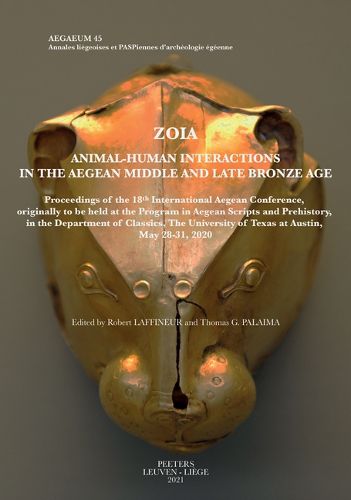Readings Newsletter
Become a Readings Member to make your shopping experience even easier.
Sign in or sign up for free!
You’re not far away from qualifying for FREE standard shipping within Australia
You’ve qualified for FREE standard shipping within Australia
The cart is loading…






The 18th International Aegean Conference on the subject of Zoia (literally 'creatures endowed with an anima or life force') was conceived and organized by Robert Laffineur and Tom Palaima, director of the Program in Aegean Scripts and Prehistory (PASP) in the Department of Classics at The University of Texas at Austin, marking 30 years of their collaboration on Aegaeum volumes and conferences. In the event, Covid-19 forced the cancellation of the conference proper.
This volume, however, testifies to the dedication of Aegeanist scholars
worldwide to accomplish the scholarly objectives of the proposed
conference: to examine, from a wide range of specialist research
perspectives, how the human societies that developed in the Aegean area
in the Middle and Late Bronze Age and the human beings within them
interacted with wild, domesticated and semi-domesticated animals of the
sea, sky and land socio-politically, economically, religiously,
ideologically, imaginatively and artistically. Diamantis Panagiotopoulos
stresses in his keynote paper that the 28 papers in Zoia reflect
"the dynamic development of Human-Animal Studies" in the last two
decades.
Papers are grouped under five main topics: identification of the animal
environment; human uses of domesticated and wild animals, material
economy, diet and society; hybrid and fantastic creatures in animal
iconography (seals, frescoes and other forms of representation); animals
in beliefs and religion (their contemporary symbolic uses and later uses
as relics or heirlooms); and animals in texts (Indo-European and
non-Indo-European; Cretan Pictographic, Linear A, Linear B and later
Homeric and historical Greek).
The results are comprehensive, eclectic, scientifically informative and
intellectually provocative. They help us see protohistoric Aegean
cultures as the non-human animals inextricably linked to them saw them.
$9.00 standard shipping within Australia
FREE standard shipping within Australia for orders over $100.00
Express & International shipping calculated at checkout
The 18th International Aegean Conference on the subject of Zoia (literally 'creatures endowed with an anima or life force') was conceived and organized by Robert Laffineur and Tom Palaima, director of the Program in Aegean Scripts and Prehistory (PASP) in the Department of Classics at The University of Texas at Austin, marking 30 years of their collaboration on Aegaeum volumes and conferences. In the event, Covid-19 forced the cancellation of the conference proper.
This volume, however, testifies to the dedication of Aegeanist scholars
worldwide to accomplish the scholarly objectives of the proposed
conference: to examine, from a wide range of specialist research
perspectives, how the human societies that developed in the Aegean area
in the Middle and Late Bronze Age and the human beings within them
interacted with wild, domesticated and semi-domesticated animals of the
sea, sky and land socio-politically, economically, religiously,
ideologically, imaginatively and artistically. Diamantis Panagiotopoulos
stresses in his keynote paper that the 28 papers in Zoia reflect
"the dynamic development of Human-Animal Studies" in the last two
decades.
Papers are grouped under five main topics: identification of the animal
environment; human uses of domesticated and wild animals, material
economy, diet and society; hybrid and fantastic creatures in animal
iconography (seals, frescoes and other forms of representation); animals
in beliefs and religion (their contemporary symbolic uses and later uses
as relics or heirlooms); and animals in texts (Indo-European and
non-Indo-European; Cretan Pictographic, Linear A, Linear B and later
Homeric and historical Greek).
The results are comprehensive, eclectic, scientifically informative and
intellectually provocative. They help us see protohistoric Aegean
cultures as the non-human animals inextricably linked to them saw them.